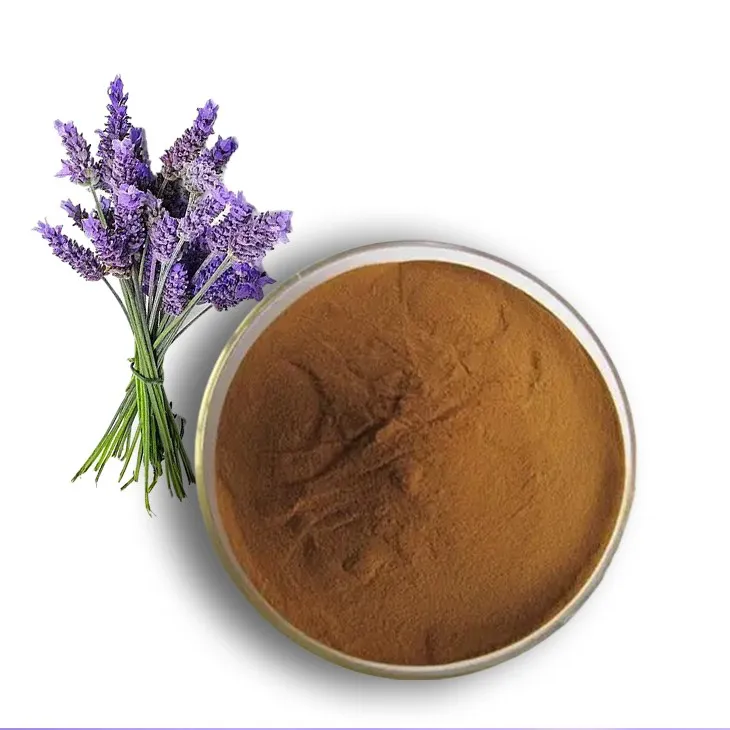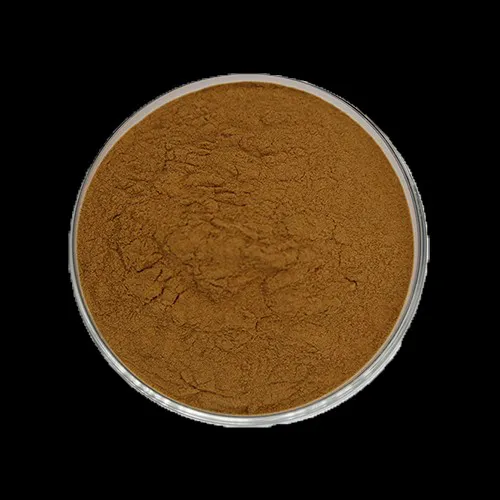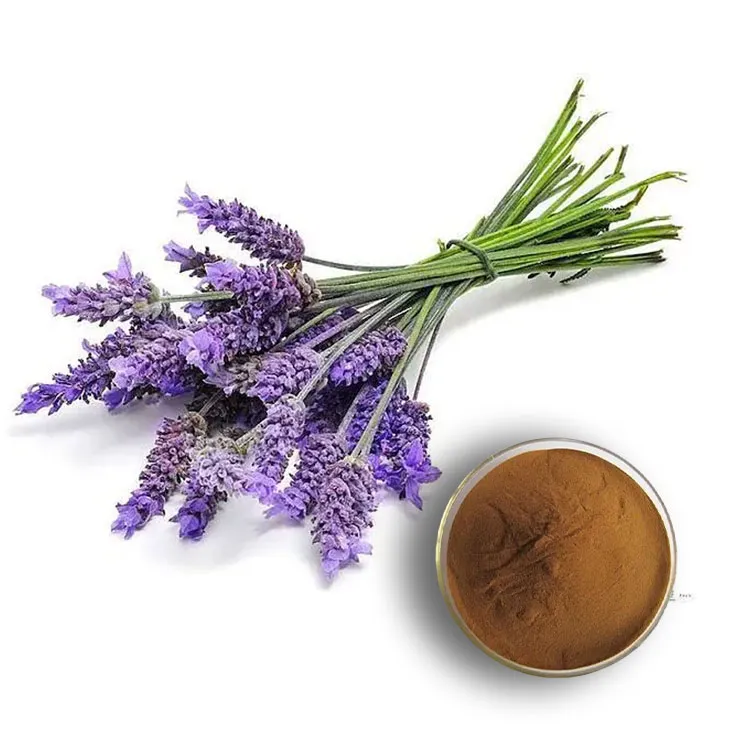- 0086-571-85302990
- sales@greenskybio.com
The process of extracting linalool from lavender extract.
2024-11-30

1. Introduction
Lavender has long been cherished for its pleasant aroma, which is largely due to the presence of linalool. Linalool is a terpene alcohol with a floral scent that has various applications in the perfume, cosmetic, and food industries. Extracting linalool from Lavender Extract is a crucial process that requires careful consideration of different techniques and factors. This article aims to provide a comprehensive understanding of this extraction process.

2. Common Extraction Techniques
2.1 Steam Distillation
Steam distillation is one of the most traditional and widely used methods for extracting linalool from lavender.
-
Advantages:
- It is a relatively simple and cost - effective method. The equipment required for steam distillation is not overly complex, making it accessible for small - scale producers as well.
- It can extract a wide range of volatile compounds along with linalool, which can contribute to the overall quality and complexity of the extract. For example, other terpenes and essential oils present in lavender can also be co - extracted, enhancing the natural fragrance profile.
-
Disadvantages:
- High temperatures involved in steam distillation can sometimes cause degradation or alteration of certain components. Linalool is relatively sensitive to heat, and prolonged exposure to high temperatures during steam distillation may lead to a loss of its characteristic aroma or chemical structure.
- The extraction efficiency may not be as high as some other modern methods. Some of the linalool may remain trapped in the plant material or may not be fully transferred to the distillate.
-
Process:
- Fresh or dried lavender is placed in a distillation apparatus. The plant material is usually finely chopped or ground to increase the surface area for better extraction.
- Steam is passed through the lavender. As the steam heats the plant material, the volatile compounds, including linalool, vaporize.
- The vapor mixture of steam and volatile compounds is then condensed. The condensed liquid, which contains water and the extracted compounds, is collected.
- Finally, the water and the essential oil phase (which contains linalool) are separated, usually by using a separator funnel.
2.2 Solvent Extraction
Solvent extraction is another popular method for obtaining linalool from Lavender Extract.
-
Advantages:
- It can achieve a relatively high extraction yield. Solvents can penetrate deep into the plant material and dissolve a large amount of linalool and other related compounds.
- There is more control over the extraction process compared to steam distillation. Different solvents can be selected based on their solubility properties for specific components in lavender.
-
Disadvantages:
- The use of solvents poses safety and environmental concerns. Many solvents are flammable, toxic, or harmful to the environment. For example, some organic solvents like hexane are non - renewable and can cause pollution if not properly disposed of.
- There is a risk of solvent residue in the final product. Even after the extraction process, traces of the solvent may remain in the linalool extract, which can be unacceptable in applications such as food and cosmetics.
-
Process:
- A suitable solvent, such as ethanol or hexane, is selected. The choice of solvent depends on the solubility of linalool and other desired compounds in lavender.
- The lavender material is soaked in the solvent for a certain period. This allows the solvent to dissolve the linalool and other components.
- The solvent - laden solution is then filtered to remove any solid plant debris.
- The solvent is evaporated to obtain the concentrated linalool extract. This step requires careful control of temperature and pressure to avoid degradation of linalool.
2.3 Supercritical Fluid Extraction
Supercritical fluid extraction is a more advanced technique for linalool extraction.
-
Advantages:
- It offers high selectivity. Supercritical fluids, such as carbon dioxide (CO₂), can be adjusted to selectively extract linalool while leaving behind unwanted components. This results in a purer extract.
- Since supercritical CO₂ is non - toxic, non - flammable, and environmentally friendly, it is a more sustainable option compared to some solvents used in solvent extraction.
- The extraction process can be carried out at relatively low temperatures, which helps to preserve the integrity of linalool. This is especially important as linalool is sensitive to heat.
-
Disadvantages:
- The equipment for supercritical fluid extraction is expensive and requires specialized knowledge for operation. This high cost can be a barrier for small - scale producers.
- The extraction process is more complex compared to steam distillation and solvent extraction. It requires precise control of pressure and temperature to maintain the supercritical state of the fluid.
-
Process:
- Carbon dioxide is pressurized and heated to reach its supercritical state. In this state, CO₂ has properties of both a gas and a liquid, allowing it to effectively penetrate the lavender material.
- The supercritical CO₂ is passed through the lavender. Linalool and other volatile compounds dissolve in the supercritical fluid.
- The fluid containing the dissolved compounds is then depressurized, which causes the CO₂ to return to its gaseous state and the extracted compounds, including linalool, to be collected.

3. Maintaining the Integrity of Linalool during Extraction
Linalool is a delicate compound, and several measures need to be taken to ensure its integrity during the extraction process.
-
Temperature Control:
- As mentioned earlier, linalool is sensitive to heat. Therefore, extraction methods that involve lower temperatures, such as supercritical fluid extraction, are preferable. In steam distillation, efforts should be made to minimize the time of exposure to high temperatures. For example, optimizing the steam flow rate and the size of the distillation apparatus can help reduce the overall heating time.
-
Avoiding Oxidation:
- Oxidation can occur during extraction, which can change the chemical structure and aroma of linalool. To prevent oxidation, the extraction process should be carried out in an inert atmosphere or with the addition of antioxidants. For solvent extraction, nitrogen - purged solvents can be used to reduce the presence of oxygen.
-
Proper Handling of Plant Material:
- Fresh lavender should be processed as soon as possible after harvesting. Delayed processing can lead to the degradation of linalool within the plant material. Also, proper drying techniques should be employed if dried lavender is used for extraction. For example, drying at low temperatures in a well - ventilated area can help preserve the linalool content.

4. Significance of Linalool Extraction in the Lavender - Based Product Industry
The extraction of linalool from Lavender Extract has far - reaching significance in the lavender - based product industry.
-
Perfume Industry:
- Linalool is a key ingredient in many perfumes due to its pleasant floral scent. The extraction of high - quality linalool from lavender allows perfumers to create unique and natural - smelling fragrances. It can be used as a top note, middle note, or base note depending on the desired fragrance profile.
-
Cosmetic Industry:
- In cosmetics, linalool has antimicrobial and anti - inflammatory properties. It can be used in skin - care products such as lotions, creams, and serums. The extraction of pure linalool from lavender ensures that these beneficial properties are effectively incorporated into the cosmetic products.
-
Food Industry:
- Linalool is used as a flavoring agent in the food industry. It imparts a floral and slightly sweet flavor to products such as baked goods, confectionery, and beverages. The extraction of linalool from lavender in a pure and safe form is essential for its use in food products, as it must meet strict regulatory requirements regarding purity and safety.
5. Conclusion
The extraction of linalool from lavender extract is a complex but important process. Different extraction techniques offer various advantages and disadvantages, and the choice of method depends on factors such as cost, yield, and the desired quality of the final product. Maintaining the integrity of linalool during extraction is crucial to ensure its effectiveness in various applications. The significance of this extraction in the lavender - based product industry cannot be overstated, as linalool plays a vital role in the creation of high - quality perfumes, cosmetics, and food products. Future research may focus on improving existing extraction techniques or developing new ones to meet the growing demand for high - quality linalool - rich extracts.
FAQ:
What are the common extraction techniques for linalool from lavender extract?
There are several common extraction techniques. Steam distillation is one of them. In this method, steam is passed through the lavender extract, and the volatile linalool vaporizes along with the steam. Then, the vapor is condensed, and linalool is separated. Another technique is solvent extraction. Here, a suitable solvent is used to dissolve linalool from the extract. However, each technique has its own set of advantages and disadvantages.
What are the advantages of steam distillation for linalool extraction?
Steam distillation has the advantage of being a relatively simple and traditional method. It does not require complex equipment in some cases. It also generally produces a relatively pure form of linalool as it relies on the difference in volatility between linalool and other components in the lavender extract. Moreover, it is a relatively safe method as it does not involve the use of potentially harmful solvents.
What are the disadvantages of solvent extraction for linalool?
One major disadvantage of solvent extraction is the potential for solvent residues in the final product. This can be a problem as the solvent may be toxic or have an unwanted odor. Additionally, the choice of solvent is crucial, and if the wrong solvent is chosen, it may not effectively extract linalool or may also extract other unwanted compounds. The process of solvent removal can also be energy - intensive and complex.
How can the integrity of linalool be maintained during the extraction process?
To maintain the integrity of linalool during extraction, proper temperature control is crucial. High temperatures can cause linalool to degrade or react with other components. Also, minimizing the exposure time to any harsh chemicals or conditions can help. Using high - quality starting materials, i.e., lavender extract, is also important as impurities in the extract can affect the linalool during extraction. Additionally, in some cases, the use of gentle extraction techniques or the addition of stabilizers can assist in maintaining the integrity of linalool.
Why is linalool extraction from lavender significant in the lavender - based product industry?
Linalool extraction is significant in the lavender - based product industry because linalool is one of the key components responsible for the characteristic aroma of lavender. In products such as perfumes, soaps, and aromatherapy products, linalool provides the pleasant lavender scent. It also has potential therapeutic properties, which add value to the products. Moreover, the extraction of linalool allows for the standardization of the lavender - based product's aroma and quality.
Related literature
- Linalool Extraction from Lavender: Optimization of the Process"
- "The Chemistry of Linalool in Lavender Extracts"
- "Advances in Linalool Extraction from Lavender for Industrial Applications"
- ▶ Hesperidin
- ▶ citrus bioflavonoids
- ▶ plant extract
- ▶ lycopene
- ▶ Diosmin
- ▶ Grape seed extract
- ▶ Sea buckthorn Juice Powder
- ▶ Beetroot powder
- ▶ Hops Extract
- ▶ Artichoke Extract
- ▶ Reishi mushroom extract
- ▶ Astaxanthin
- ▶ Green Tea Extract
- ▶ Curcumin Extract
- ▶ Horse Chestnut Extract
- ▶ Other Problems
- ▶ Boswellia Serrata Extract
- ▶ Resveratrol Extract
- ▶ Marigold Extract
- ▶ Grape Leaf Extract
- ▶ blog3
- ▶ blog4
-
Bulk purchase of black pepper extract.
2024-11-30
-
Ginger extract of the best quality.
2024-11-30
-
Wholesale Passion Fruit Extract Suppliers.
2024-11-30
-
Organic Genistein, Australia.
2024-11-30
-
Fenugreek Extract Powder
2024-11-30
-
Cranberry Extract
2024-11-30
-
Genistein
2024-11-30
-
Citrus Aurantii Extract
2024-11-30
-
Sophora Japonica Flower Extract
2024-11-30
-
Kelp Extract Powder
2024-11-30
-
Mangosteen extract powder
2024-11-30
-
White Willow Bark Extract
2024-11-30
-
Honeysuckle Pollen
2024-11-30
-
Hesperidin
2024-11-30





















